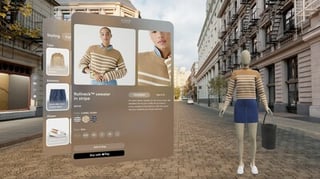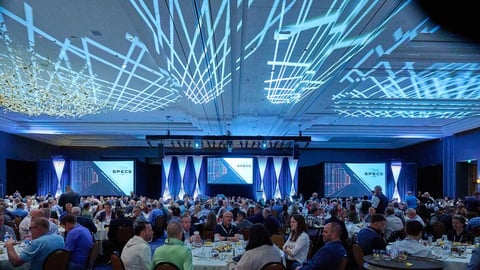How Apple Vision Pro’s arrival affects retail
Apple Vision Pro is finally here – and it may (or may not) have a significant impact on retail.
In June 2023, Apple initially introduced what it calls the world’s first “spatial computer,” Apple Vision Pro. On Feb. 2, 2024, the tech giant released the device for general purchase in the U.S.
Users wear a headset that connects them to the new Apple visionOS operating system, which is designed to provide a 3-D interface that enables apps to appear side by side in the space of front of a user, at any scale.
The virtual display also allows users to interact with digital visual and audio content, including immersive virtual environments and FaceTime conversations, displayed in a “real life” manner directly in their view.
To enable user navigation and interaction with spatial content, Apple Vision Pro’s input system is controlled by a person’s eyes, hands, and voice.
When Apple first announced Apple Vision Pro, I wrote a column about how the technology could potentially affect retail. Now that there are already a few live retailer implementations of the technology, it’s time to take a new look at what it might mean for the industry.
My early prediction is Apple Vision Pro will prove a legitimate mobile engagement application for a technologically savvy and higher-income subset of consumers, without ever gaining the popularity of smartphones or tablets. Smartwatches might serve as a good corollary.
Here are three more in-depth thoughts on the subject:
Short-term issues: Cost and form factor
The least expensive model of Apple Vision Pro costs around $3,500 in the U.S., and the form factor is a large pair of goggles that straps around the user’s head and covers a good portion of the upper half of their face.
However, reports indicated that Apple had sold as many as 200,000 units of the device in presale by the end of January, and cost will undoubtedly come down and form factor may become less obtrusive and more visually appealing.
Nevertheless, similar issues have limited most consumers’ use of Meta Quest (formerly Oculus) VR devices and prompted Google to phase out its support of the Google Glass connected eyewear device in 2016 and discontinue it entirely in 2022 (more on Meta Quest devices shortly).
Longer term, cost will almost surely become less of a barrier to widespread consumer use of Apple Vision Pro and it’s hard to predict how form factor, or consumer acceptance of it, may shift over time.
Promising development: Consumer-facing design application
Early retail deployments of Apple Vision Pro solutions are focused on leveraging the technology’s spatial features and “real life”-like blending of physical and digital to enable the placement of virtual products in a user’s surroundings.
For example, Wayfair is extending the pilot of Decorify, a solution that uses a generative AI model to create shoppable, photorealistic images of products, to Apple Vision Pro to let users view and select Wayfair items in 3D directly in their spaces. All 3D items are at full scale and anchor to the floor, designed to enable shoppers can see a variety of life-size products in any space.
Meanwhile, the J.Crew Virtual Closet utilizes SharePlay, a set of features for shared experiences while on a FaceTime call, to enable customers to chat with J.Crew expert stylists or host group calls and explore a curated product selection. And Lowe's Style Studio allows customers to enter an immersive 3D kitchen scene, select a kitchen design, transform their plans into style boards, and email, text or AirDrop them for discussion.
Future possibility: Back-end supply chain and training tool
Looking ahead, it is easy to envision Apple Vision Pro also becoming a back-end solution for retailers. Walmart has used the Meta Quest (formerly Oculus) VR headset to immersively train employees in realistic scenarios such as Black Friday store crowds, and action sports lifestyle gear retailer Evo has trained seasonal warehouse workers with Pixana 360-degree VR devices.
Apple Vision Pro could also serve as an effective platform for retailers to create “digital twins,” photorealistic, interactive digital replicas of stores and warehouses. Lowe’s has created a digital twin solution based on Nvidia’s Omniverse metaverse environment that is accessible by Magic Leap 2 augmented reality (AR) headsets.












